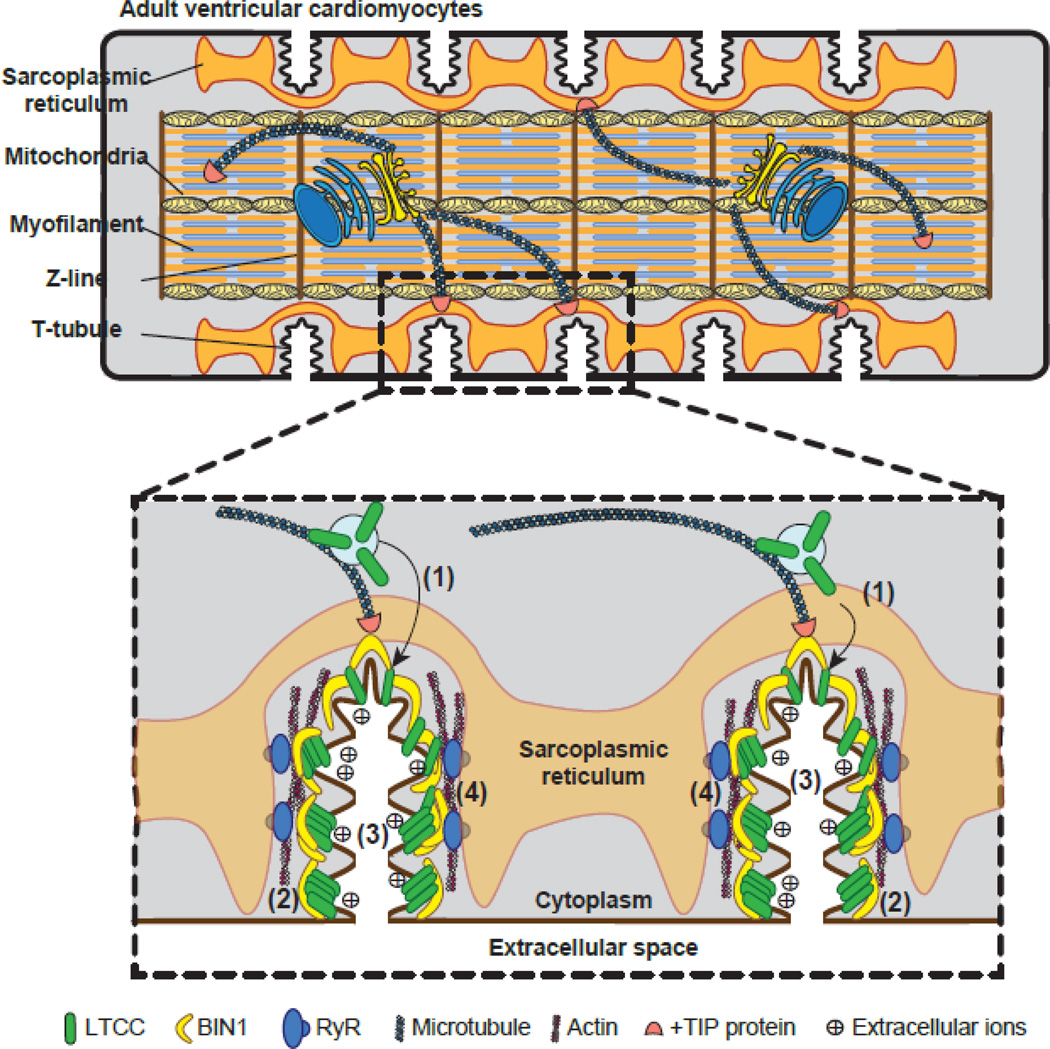Figure 1.
Schematic illustration of BIN1-regulated cardiac t-tubule function. Top: cartoon of mammalian adult ventricular cardiomyocytes, which are rod-shaped striated muscle cells with t-tubule invagination occurring periodically at the Z-lines of myofilament. Bottom: The “banana” molecule BIN1 regulates cardiac t-tubule function through: (1) facilitating microtubule-dependent targeted delivery of LTCCs to t-tubules; (2) clustering LTCCs at the t-tubule surface; (3) creating a slow diffusion zone within t-tubule lumen for extracellular ions; (4) organizing microdomains critical for dyad formation and functions.

